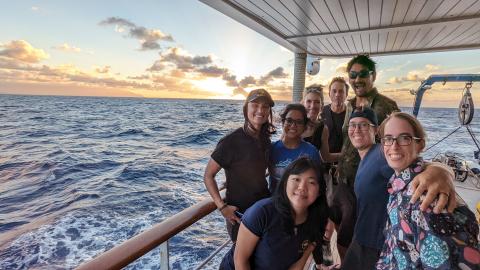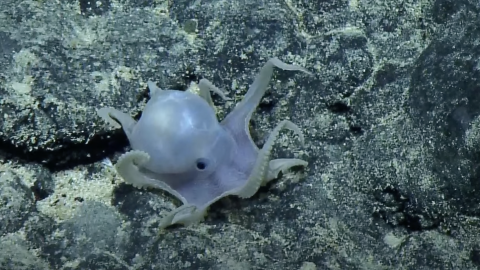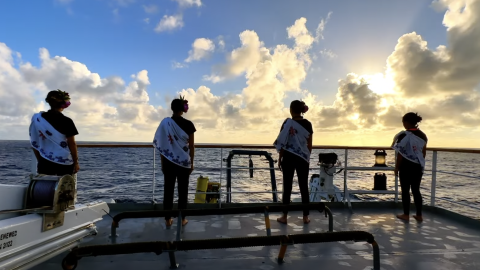Visiting an Unexplored Region of Papahānaumokuākea Marine National Monument with Ala ʻAumoana Kai Uli Expedition
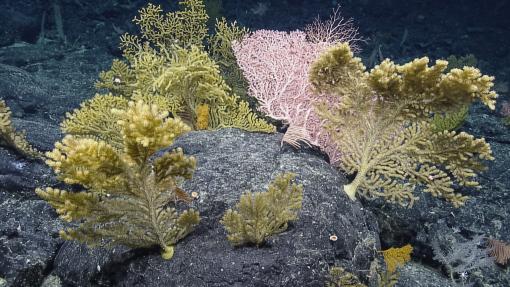
As we launch this voyage from Hawaiʻi, we express our deepest aloha to the communities of Lāhainā, Kula, and Kīhei on Maui who are dealing with unimaginable trauma and grief from the loss of beloved family members, friends, and homes in the wake of the worst natural disaster in state history and the deadliest U.S. wildfire in over a century. If you want to donate to relief efforts to help these communities, please visit the Maui Strong Fund for more information.
On September 1, Ocean Exploration Trust and partners set sail from Honolulu aboard E/V Nautilus for a 28-day-long expedition to explore unseen deep-sea habitats of Papahānaumokuākea Marine National Monument (PMNM), focusing on the northwestern extent of the Monument, over 1,000 miles north of Honolulu. This expedition, Ala ʻAumoana Kai Uli, is funded by NOAA Ocean Exploration via the NOAA Ocean Exploration Cooperative Institute.
Thanks to the ship’s advanced telepresence technology, community audiences can join the team live-streaming remotely operated vehicle dives and seafloor mapping data collection around the clock with interactive opportunities to meet explorers and be part of revealing new knowledge at NautilusLive.org.
“We’re excited to return to Papahānaumokuākea - an extraordinary place that has been distinguished at the international, national, and state level for its exceptional natural and cultural significance,” says Daniel Wagner, OET Chief Scientist and Expedition Co-Lead. “While this represents E/V Nautilus’ eighth expedition to explore the deep-water natural and cultural resources of PMNM, the region remains largely unexplored due to its sheer size and remoteness.”
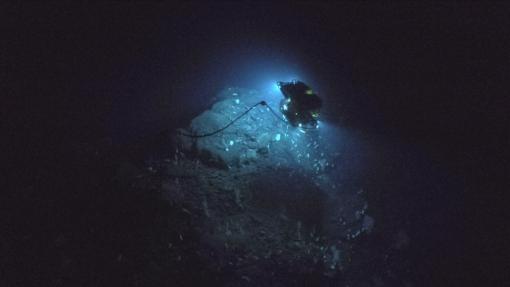
Although baseline knowledge of deep-water biodiversity and biocultural resources is expanding, large areas remain completely unexplored. PMNM is the largest contiguous fully protected conservation area under the U.S. flag, and one of the largest marine conservation areas in the world. In total, it covers over 1.5 million square kilometers or 582,578 square miles (comparable to the size of the Gulf of Mexico and larger than all US national parks combined).
The expedition will visit deep ocean seamounts to gather data urgently needed to address the co-management and science needs of PMNM, including a better understanding of the patterns of species distributions and the formation and geologic history of ancient seamount chains. The OET data becomes publicly accessible to enable follow-on exploration, research, cultural interpretation, and management activities to better understand and care for the ocean. While the expedition’s main focus will be the geology and biology of unexplored underwater mountains, the operating area includes several historically significant shipwrecks associated with the Battle of Midway.
As E/V Nautilus voyages to the sacred waters and ancestral islands of Kānaka ʻŌiwi (Native Hawaiians), we gratefully acknowledge multigenerational and modern Kānaka ʻŌiwi stewards of these places and honor ʻŌiwi knowledge systems. The expedition name, Ala ʻAumoana Kai Uli (path of the deep sea traveler), was composed in collaboration with OET, Kānaka OET intern alumni, NOAA, and members of the Papahānaumokuākea Native Hawaiian Cultural Working Group as one part of OET’s science and education initiatives to expand culturally grounded and ethical engagement in Hawaiʻi.
“Ala ʻAumoana Kai Uli speaks to the work that will be done on this expedition, but the name also speaks to the responsibility and accountability that we have to each other in protecting our shared ocean,” says Malia Evans, Oʻahu Education and Outreach Coordinator for Papahānaumokuākea Marine National Monument. “The name is a reflection of our collective experiences as people who love and protect the ocean, inciting images of physical and metaphoric paths, connecting ocean people to each other and various spaces within the ocean. These paths have been meticulously tended over time, but the name also reminds us of our continued shared responsibility to care for these paths and our ever-developing relationships.”
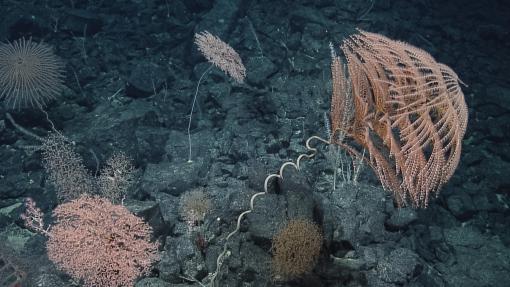
Information about the deep ocean in Papahānaumokuākea is critical as the region is being considered for designation as a new national marine sanctuary. This designation would strengthen and increase the long-term protections already existing in the monument and thereby help safeguard the unique resources in the marine portions of the Monument.
“NOAA’s Office of National Marine Sanctuaries proudly collaborates in research that is fundamental to understanding the natural and cultural resources in the monument,” says Eric Roberts, NOAA superintendent for the monument. “Conservation science allows monument staff and partners to document the condition and trends of protected ecosystems and the significance of emerging threats.”
Audiences worldwide can join the expedition from the comfort of their homes. Anyone with an Internet connection can join the expedition via NautilusLive.org, which provides 24-7 live-streaming of the expedition, in addition to an interactive question feed, highlight videos, and educational content. Schools, camps, and community events are also encouraged to schedule free, live Q&A sessions with explorers on the ship in English and ʻŌlelo Hawaiʻi (Hawaiian language). The expedition sails with a global team of scientists, engineers, Hawaiian cultural experts, students, including three local early career professionals having their first experiences at sea, and educators from Hawaiʻi, Guam, and North Carolina joining as storytellers to engage the public in the mission.
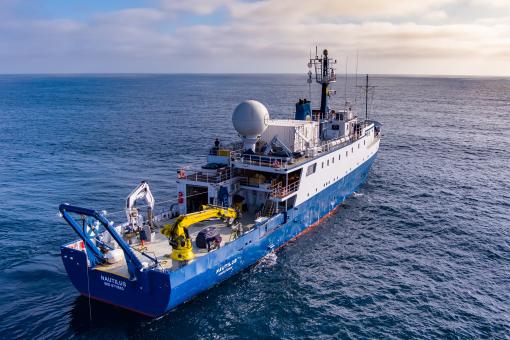
“It’s an honor for our team to visit Papahānaumokuākea and to help the world connect to the magic and mystery of the ocean and to inspire a deeper connection to these special underwater landscapes and places on the planet,” says Megan Cook, OET Director of Education & Outreach and Expedition Co-Lead.
As always the case with OET expeditions, community outreach is a key part of this expedition’s goals. Using the excitement of discovery, OET aims to create an ocean-literate society with workforce development, STEAM education programs, and public outreach, specifically focusing on engaging historically marginalized groups. This is OET’s sixth expedition of 2023 and 154th worldwide with the mission to advance scientific knowledge, inform future exploration efforts, and engage a new generation of curious minds eager to learn more about our fascinating underwater world.
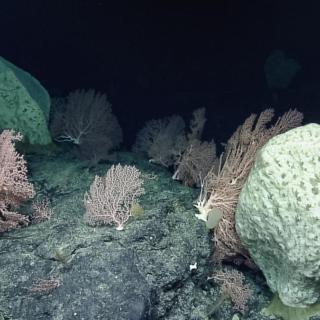
Ala ʻAumoana Kai Uli in Papahānaumokuākea Marine National Monument
Ocean Exploration Trust and partners will conduct a telepresence-enabled expedition to explore unseen deep-sea habitats aboard E/V Nautilus with ROV and seafloor mapping operations in the Papahānaumokuākea Marine National Monument (PMNM) focused on the largely unexplored northwestern section of the Monument.
